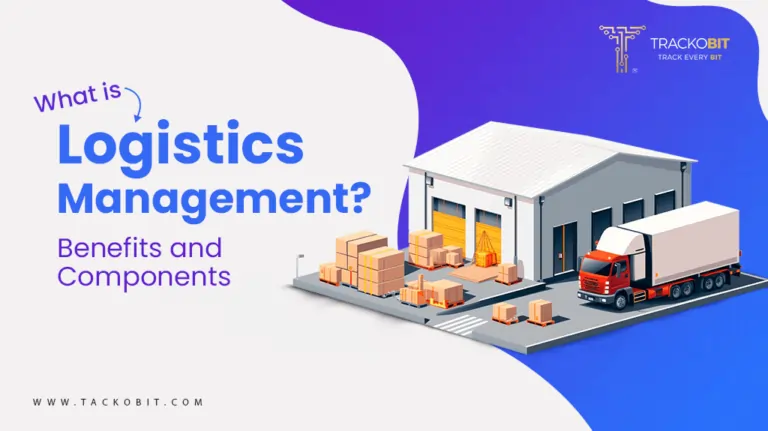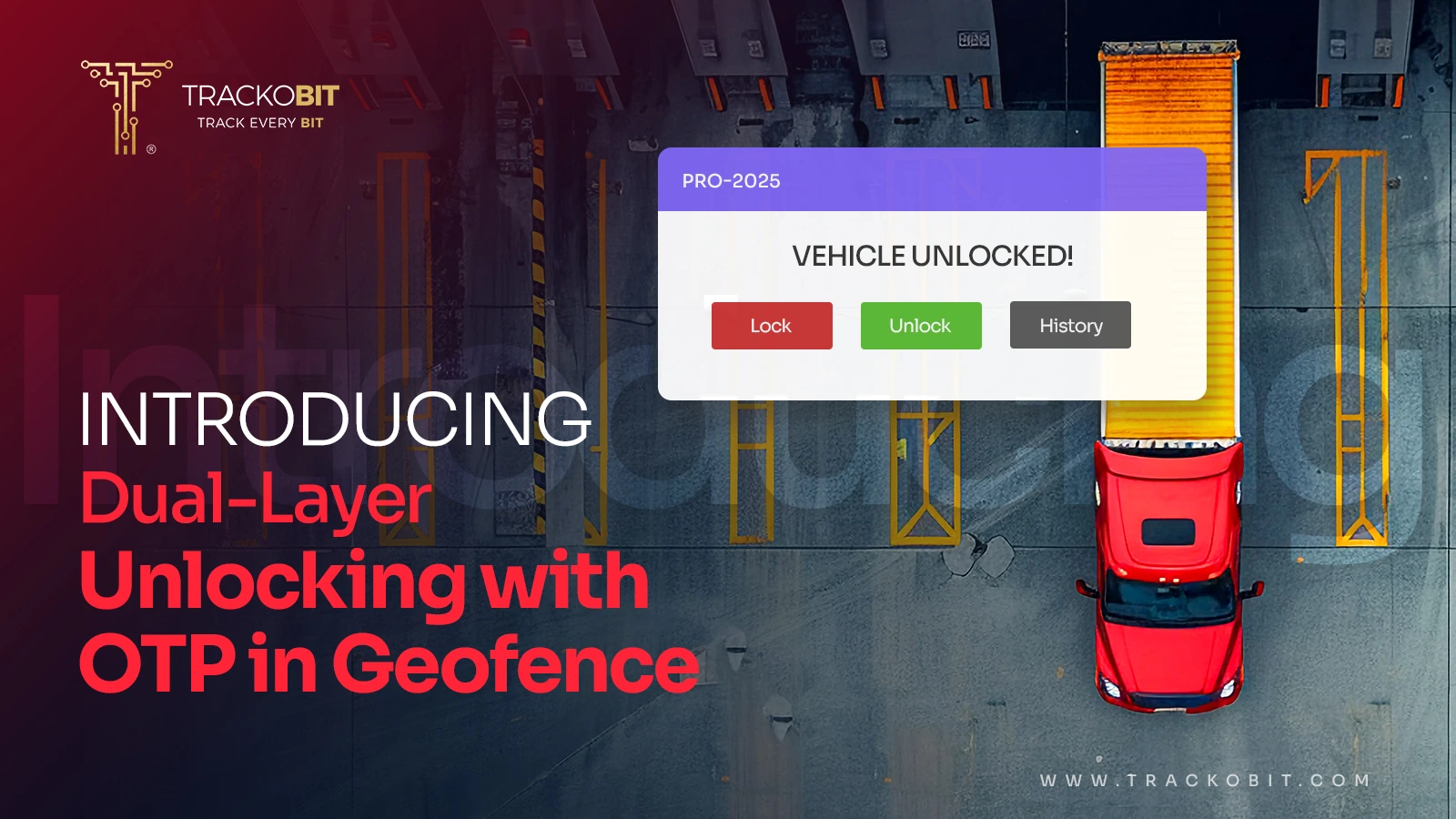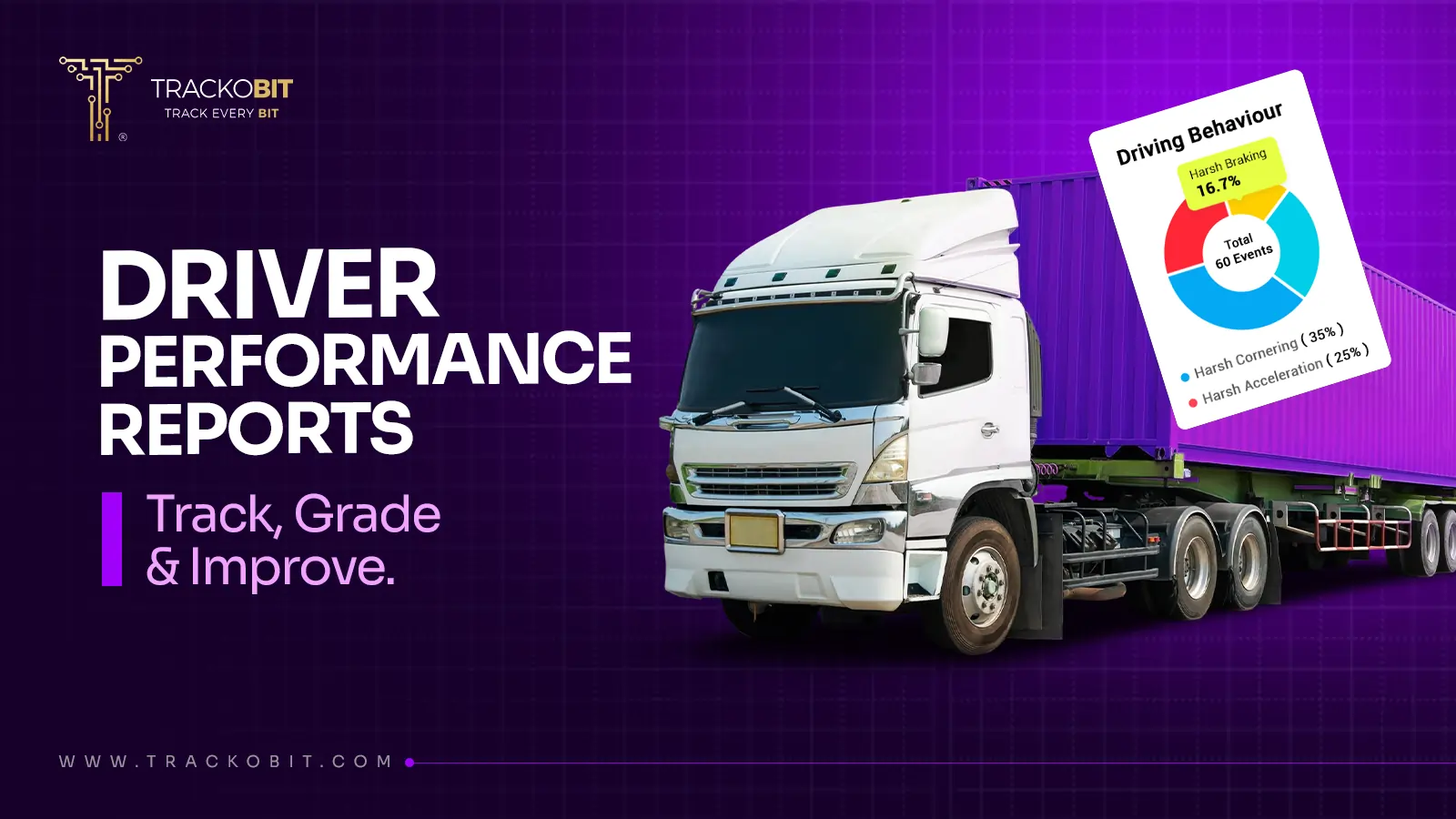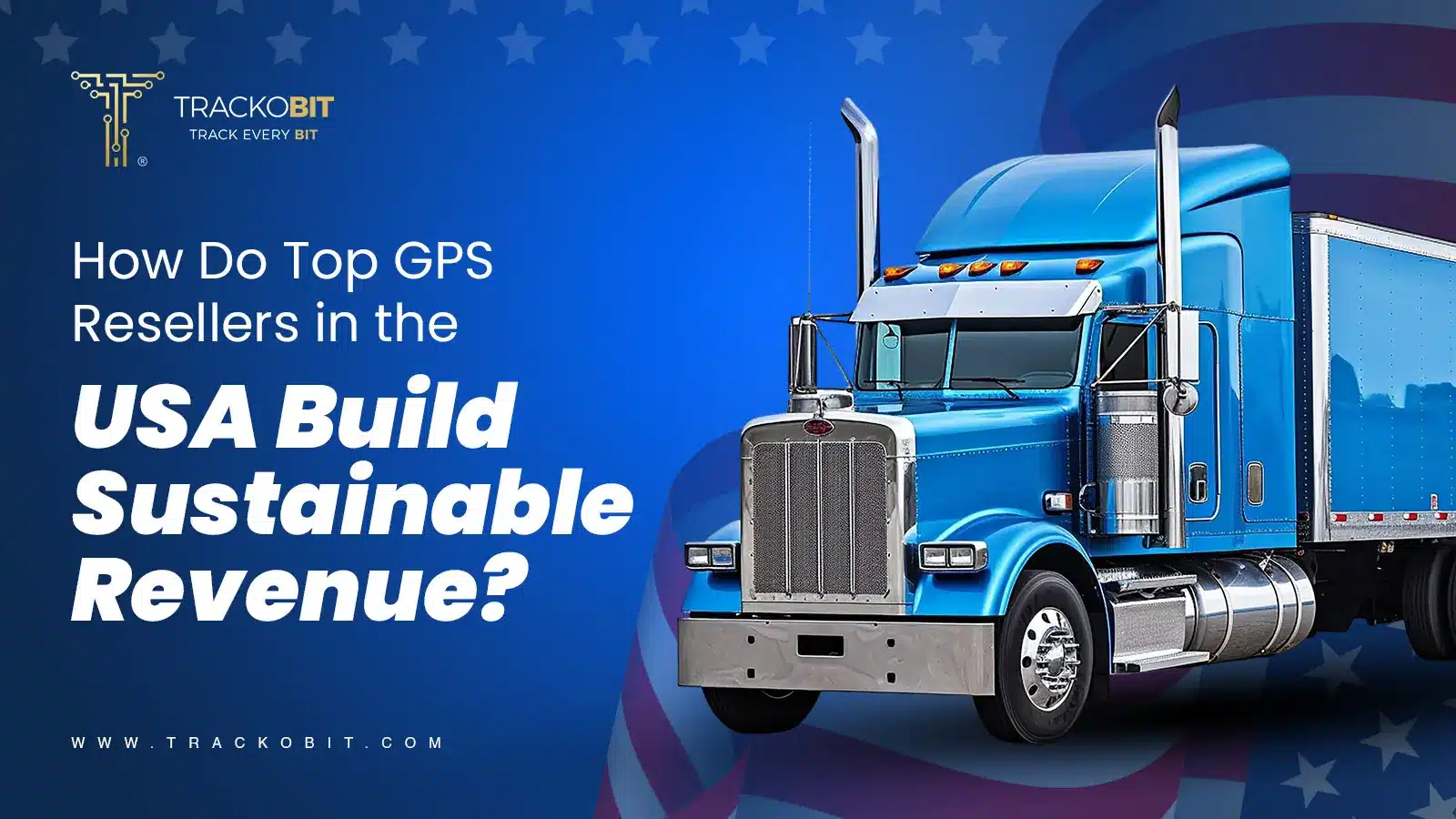-
TrackoBit
Manage commercial vehicles with the new-age Fleet Management Software
TrackoBit -
TrackoField
Streamline your scattered workforce with Field Force Management Software
TrackoField -
Features Resources
-
Blog
Carefully curated articles to update you on industrial trends. -
White Paper
Insightful papers and analysis on essential subject matters. -
Glossary
Explore an alphabetical list of relevant industry terms. -
What’s New
Get TrackoBit & TrackoField monthly updates here. -
Case Study
Explore the cases we solved with our diverse solutions. -
Infographics
Explore key topics through visually impactful infographics.
-
About Us
Get to know TrackoBit: our team, ethos, values, and vision. -
Careers
Join the most dynamic cult of coders, creatives and changemakers. -
Tech Support
Learn about our technical support team and services in detail. -
Events
Check out the exhibitions where we left our marks and conquered. -
Contact Us
Connect with us and let us know how we can be of service.
What is Logistics Management?
- Author:Tithi Agarwal
- Read Time:10 min
- Published:
- Last Update: June 12, 2025
Table of Contents
Toggle
Logistics management is a component of supply chain management that is vital for meeting customer demands through the effective planning and optimised transportation of goods from origin to final destination.
Table of Contents
Toggle
The increase in demand, guaranteeing a positive customer experience, cost of transportation and the need to shorten the delivery cycle have pushed businesses in supply chains to streamline logistics management.
There are many challenges involved in managing logistics, from managing inventory to tracking fleet and deliveries. But what exactly is logistics management? What does it entail? What are its types, components, and benefits? Read this article for valuable insights into optimising logistics management.
What is Logistics Management?
Logistics management is a part of supply chain management. It refers to acquiring, storing and transporting inventory from the origin to the end consumer. Logistics management involves maintaining the inventory, resources and related information. The process ensures the goods reach the right location at the right time and to the right customer. The main goal of logistics management is to help businesses reduce expenses and enhance customer experience.
It integrates various activities, including transportation, inventory management, warehousing, material handling, packaging, and security. Effective logistics management is crucial for improving supply chain efficiency, reducing transportation and warehousing costs, and increasing overall competitiveness.
Types of Logistics Management
The logistics management process begins with the accumulation and transportation of raw materials and goes on to the final stage, where goods are delivered to the final destination. There are many types of logistics associated with different supply chain processes. The main types of logistics management are as follows:
Supply Chain
Supply management entails planning, procuring, and coordinating materials that are needed in a certain location at a specific time to support production. Coordinating the materials’ transit and storage is another aspect of these logistics. In order to guarantee a seamless process, the supply level in relation to demand must be assessed. Timely handling of supply management is crucial, since any delays may cause disruptions to the entire supply chain.
Inbound Logistics
Inbound logistics is crucial to logistics management. This procedure effectively moves resources and goods from suppliers to manufacturing sites or storage facilities.
The process includes inventory control, supplier relationship management, and transportation management. Inbound logistics may reduce costs when appropriately implemented, improving customer satisfaction and operational efficiency.
It’s a crucial component of overall supply chain performance optimisation.
Outbound Logistics
Outbound logistics is an essential component of logistics management. It focuses on moving completed goods from a business’s manufacturing sites to its customers. Order picking, consolidation, item shipment, and product delivery to final consumers are all part of this process.
Having good control over outbound logistics can result in significant cost savings as well as improved customer service. This category includes transportation planning, inventory control, labelling and packing, and building strong client connections.
Reverse Logistics
An essential component of supply chain management is reverse logistics, which focuses on effectively transferring commodities from buyers to sellers or producers. It entails procedures such as handling unsold or end-of-life goods, handling returns, and renovating or re-manufacturing.
By implementing effective reverse logistics techniques, businesses can enhance overall supply chain efficiency, recover value from returned products, and cut waste. This helps the business by guaranteeing easy returns procedures and appropriate treatment of returned goods, and it also improves customer satisfaction.
Third Part Logistics (3PL)
Independent Contractor Logistics The corporation outsources its logistics services to other operational logistics firms (3PL). In 3PL logistics, a third party handles every aspect of logistics, including delivery, warehousing, transportation, and inventory management. As a result, the corporation can concentrate on other facets of its operations. Amazon, for instance, has contracted out its inventory control to third party vendors.
Major Components of Logistics Management
Logistics management encompasses a broad network of suppliers, agents, freight forwarding companies, distributors, packers, and other service providers through various transportation methods.
Inventory Planning
Inventory management is the process of ordering, storing, using, and selling a company’s inventory. This includes managing raw materials, components, and finished products, as well as warehousing and processing such items. Proper management is required to reduce storage costs while guaranteeing that the proper quantity of goods is maintained in stock to meet customers’ demands. It enables accurate order fulfilment and a clean warehouse, leading to better productivity and time and cost savings.
Fleet Management
Fleet management involves managing vehicles to run on time, within the budget and at maximum efficiency. Keeping a fleet of vehicles in good working order requires managing the risks associated with transporting freight. Fleet management software like TrackoBit enhances logistics planning and helps assess the viability and scalability of logistics services. It also improves productivity and efficiency while reducing overall labour and transportation costs.
Warehousing
Warehousing is the storage of goods or unprocessed materials in a warehouse. The capacity of the warehouse is one important factor that influences inventory planning. Effective logistics management requires proper warehouse management. The capacity and closeness of warehouses are the two main criteria that affect how well logistics operations perform in a supply chain.
Delivery Fulfillment
Enhancing delivery fulfillment is vital to increasing client satisfaction. Delivery is the process of moving a product from the point of sale into the customer’s possession. Last-mile delivery software like TrackoMile ensures that delivery operations are optimised and streamlined, thus ensuring on-time delivery of orders.
Demand Planning
Demand planning is evaluating, predicting, and analyzing consumers’ demand to ensure the availability of goods and products that consumers want to buy. It makes it possible for a business to project sales and keep precisely the correct amount of inventory on hand to meet customer needs without going overboard. Demand planning analyzes prospective future revenue-generating opportunities and helps obtain insights into market trends.
8 Great Tips for Effective Logistics Management
Efficient logistics management ensures a smooth flow of products and communication around their processHere are 8 ways to optimise the logistics process to ensure better customer relationships and minimize the need to maintain excess inventory. It also helps to reduce errors, shrink delivery times, and increase revenues.
1. Ensuring Better Control of Ground-level Activities
Logistics management provides a more visible and transparent picture of operations, connecting all resources and integrating with other departments. Throughout the whole delivery process, there should be real-time information access which can expedite the transportation process and guarantee improved control to reduce delivery delays.
2. Bringing inventory closer to customers
Keeping inventory where it is located is crucial to meeting delivery deadlines. The gap between the customer and the product needs to close since customers are becoming increasingly accustomed to receiving deliveries faster. Logistics management needs multi-inventory locations to save operating costs and expedite delivery schedules.
3. Automating core logistics operations
Automation saves significant time and money when manual interference is avoided, particularly when it comes to repetitive operations.
Automating key logistical processes with TrackoMile’s delivery management software, such as roster management, work allocation, scheduling, and route planning, among others, can
- Lower expensive errors,
- Enhance customer satisfaction
- Promote high standards of operational excellence.
Automation guarantees efficiency, precision, speed, and quality in the way processes are carried out.
Also, TrackoBit automates tracking and monitoring the first mile through telematics software. Solutions like driver behaviour monitoring automatically detect bad driving skills, ensuring safe logistics.
4. Embracing advanced routing practices
Advanced routing algorithms can be used to plan highly productive and efficient delivery routes. TrackoMile considers a wide range of external factors—120+ factors—such as traffic, weather, one-ways, tonnage, empty miles, risk considerations, and more sophisticated route planning software. As a result, mileage, transportation costs, and delays can be significantly reduced.
TrackoBit’s route planning solution provides the best-suited and efficient route for fleet trips, resulting in less fuel consumption, alerts on route deviation, and dynamic shareable ETAs.
| More in-depth Knowledge of TrackoMile & TrackoBit’s Routing capabilities. Must Read: |
5. Making last-mile deliveries customer-centric
Driven by the need for instant gratification, modern consumers are curious about the whereabouts of their orders, when they were received, exactly when they will be delivered, and by whom. Brands must provide self-service delivery models to their customers, enabling them to select the delivery date, time, and location and make any required adjustments through slot selection. Therefore, it is essential to place the customer at the core of all logistical processes, especially those involving the last mile.
6. Reducing carbon footprint
One of the main causes of the global increase in carbon emissions is transportation. Transportation consumes a lot of resources and is mostly to blame for the global carbon emissions. Businesses can significantly reduce their carbon footprint by implementing contemporary technology, such as digital documentation, automation, machine learning, and route optimisation.
7. Accurately benchmarking 3PL performance
When a company wishes to outsource all or part of its distribution and fulfilment operations, it turns to third-party logistics businesses. Encouraging logistics stakeholders to make data-driven decisions by utilising digital logistics software is crucial for effectively managing third-party logistics providers. Companies can easily obtain KPIs from 3PL providers and link them to certain delivery requirements.
8. Building robust risk management strategies
By utilising digital logistics solutions to drive strategic planning, businesses can strengthen their supply networks and fortify them against unforeseen events. Inflexible procedures and a lack of openness hamper logistics agility and resilience. Using digital solutions to reduce damage, and theft is essential to maintaining greater margins and client loyalty.
Benefits of Logistics Management
Businesses must implement effective logistics management to remain competitive and ensure stability. Proper logistics management ensures that businesses can meet both demand and consumer expectations.
1. Improving customer experience
Having effective logistics management enables prompt, high-quality service. A management plan might continuously enhance transportation procedures and eliminate interruptions because customers may become dissatisfied with delayed delivery. The customer experience can be further enhanced by offering improved customer support and a seamless goods transportation procedure. Enhanced customer satisfaction can boost a company’s reputation and increase revenue. Thus, efficient logistics play a part in providing customers with a satisfying overall experience.
2. Optimizing operational costs
When operations are sufficiently visible and open, logistics functions at its best. An effective logistics management strategy can analyse historical data to optimise routes to maximise productivity and minimise fuel expenditures. A logistics management system can lower operating expenses, increase business productivity, and maximise asset utilisation.
3. Boosting profitability
Through logistics management, businesses can enhance client connections, understand their operations comprehensively, and lessen the need to hold surplus inventory. Increasing the order fulfilment rate helps the business become more profitable. Businesses may ensure synchronised supply chain management and save operational costs by implementing the newest technology advancements, utilising route optimisation tools, and enhancing fleet capacity utilisation.
4. Better intermodal operations
Intermodal operations use two or more modes or carriers to move items from suppliers to customers. Certain standardised containers are employed for intermodal operations, removing the risk associated with the direct handling of goods. Improved intermodal operations are more dependable, safer, and environmentally friendly, and they help cut costs.
Give cta for our asset tracking in inter-modal
5. Greater delivery productivity and efficiency
Logistics aims to increase productivity and streamline processes without compromising profit margins. Cutting down on resource waste guarantees delivery productivity without sacrificing timely delivery. Logistics management can guarantee that delivery productivity is not impacted by meeting quality requirements and minimising failures, defects, and deviations.
6. Intelligent route planning
Delivery of goods must be made quickly and smoothly, respecting deadlines and road safety regulations. Route planning with intelligence makes it simple to choose the optimal paths, prevent traffic bottlenecks, monitor driver and vehicle status, cut down on wasted miles, and guarantee that products arrive at customers’ locations undamaged and on schedule. Smart route planning guarantees a high fulfilment rate and satisfied customers.
Difference Between Supply Chain Management and Logistics Management
| Basic for Comparison | Supply Chain Management | Logistics Management |
| Meaning | Supply chain management is the coordination and oversight of the supply chain’s operations. | Logistics is the process of coordinating the flow of commodities into and out of an organization. |
| Objectives | Competitive Advantage | Customer Satisfaction |
| How many organisations are involved? | Multiple | Single |
| One in another | Supply Chain Management is the new version of Logistics Management. | Logistics management is a fraction of Supply Chain Management. |
Conclusion
The increasing complexity in the movement of goods from the origin to the final destination has made logistics management critical to keep up with customer demand, grow competition in the market, and evolve market dynamics. Logistics impacts utilisation, planning, implementation, and controlling the flow of goods; it needs to be as smooth as possible.
Therefore, adopting technologies like:
- Fleet management software (TrackoBit) for the first mile,
- Outsourcing warehousing and inventory management to 3PL and
- Using last mile delivery software (TrackoMile) for final delivery to consumers
Makes the entire logistics process smooth, time and cost-effective.
Tithi Agarwal is an established content marketing specialist with years of experience in Telematics and the SaaS domain. With a strong background in literature and industrial expertise in technical wr... Read More
Related Blogs
-

How to Use Driver Behavior Reports as a Sales Hook to Close Big Fleets
Tithi Agarwal October 16, 2025TrackoBit’s driver behavior reports empower fleet providers to win big contracts by showcasing safety, efficiency, and measurable ROI.
-

TrackoBit’s Unlocking in Geofence with OTP: Elevating Cargo Protection
Tithi Agarwal September 16, 2025TrackoBit’s latest feature – Unlocking in Geofence with OTP lets you lock out theft and unlock cargo only at the…
-

Who’s Really Behind the Wheel? Unlocking Insights with Driver Performance Reports
Tithi Agarwal August 27, 2025Identify top-performing drivers, monitor violations, and grade skills with the driver performance report. This makes fleet operations more transparent and…
-

How GPS Resellers in the USA Grow Recurring Revenue with White-Label Fleet Software?
Anvesha Pandey July 3, 2025Are you a GPS reseller in the USA? Learn how to ditch one-time sales and build a recurring revenue empire…

Subscribe for weekly tips to optimize your fleet’s potential!
Your inbox awaits a welcome email. Stay tuned for the latest blog updates & expert insights.
"While you're here, dive into some more reads or grab quick bites from our social platforms!"Stay Updated on tech, telematics and mobility. Don't miss out on the latest in the industry.
We use cookies to enhance and personalize your browsing experience. By continuing to use our website, you agree to our Privacy Policy.




































